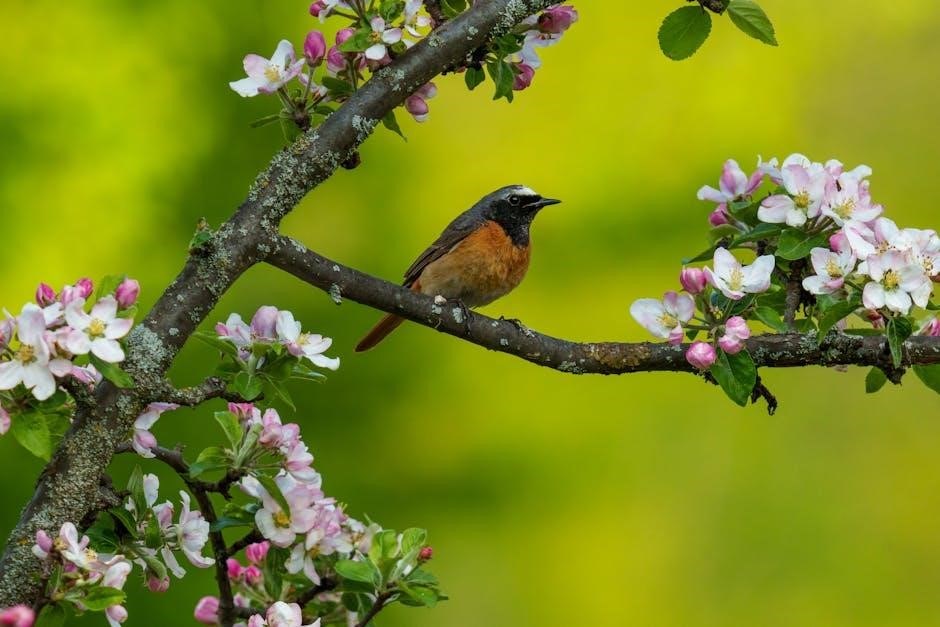Birds captivate us with their vibrant plumage, a blend of natural artistry and evolutionary ingenuity․ Their colors, ranging from subtle earth tones to dazzling spectacles, serve as a gateway to understanding their biology, behavior, and cultural significance․ This section explores the allure of bird coloration, tracing its roots in both scientific and mythological narratives․
1․1 The Fascination with Bird Plumage Colors
Bird plumage colors captivate humans due to their stunning diversity and intricate patterns․ These vibrant hues serve dual purposes, offering camouflage and enhancing communication․ The interplay of pigments like melanins and carotenoids, alongside structural feather features, creates this visual splendor․ People are drawn to these colors as they reflect nature’s artistry and evolutionary complexity․ Moreover, bird colors hold cultural and symbolic meanings, inspiring art, myths, and scientific inquiry, making them a timeless subject of human fascination․
1․2 Overview of the Evolutionary and Biological Basis of Bird Colors
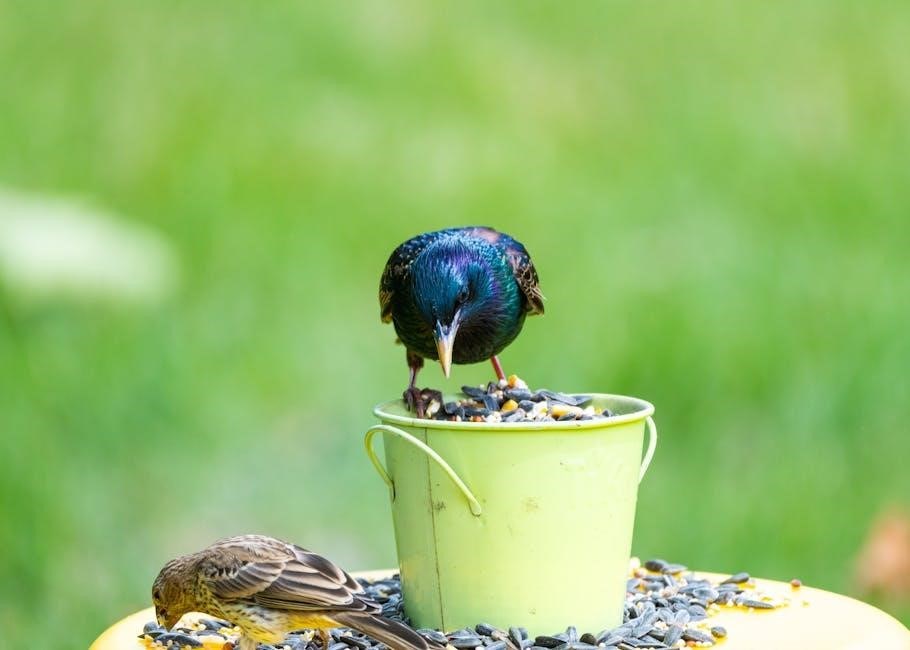
Bird coloration stems from a blend of evolutionary adaptation and biological mechanisms․ Historically, all birds were black, but an injured dove’s plight led to a parrot bursting its swollen foot, splashing vibrant colors onto the birds․ This mythological origin story reflects the diversity seen today․ Evolutionarily, colors aid survival through camouflage and mate attraction․ Biologically, pigments like melanins and carotenoids, along with feather microstructures, create this spectrum․ These traits highlight how nature intertwines beauty with function, shaping the stunning array of avian hues we admire․

Biological Mechanisms Behind Bird Colors
Bird colors arise from melanins, carotenoids, and structural feather features․ Melanins produce earthy tones, while carotenoids create vibrant hues․ Microstructures in feathers amplify these colors, enhancing visual impact․
2․1 Pigmentation: Melanins and Carotenoids
Bird feather colors are primarily derived from two types of pigments: melanins and carotenoids․ Melanins are responsible for black, brown, and gray hues, while carotenoids produce vibrant red, orange, and yellow colors․ These pigments are often combined to create a wide range of shades and patterns․ Melanins are produced by cells called melanocytes and deposited into feather follicles, whereas carotenoids are obtained from a bird’s diet, such as carotenoid-rich fruits and insects․ The interaction of these pigments with feather microstructures enhances their visual impact, making bird plumage a stunning display of biological artistry․
2․2 Structural Colors: The Role of Feather Microstructure
Beyond pigmentation, bird colors are also shaped by the microscopic structure of feathers․ Structural colors arise from the interaction of light with feather microstructures, such as tiny barbs and barbules․ These structures can refract, reflect, or scatter light, producing vivid hues like iridescent blues and greens․ For example, the shimmering colors of peacocks and hummingbirds are not from pigments but from the way light interacts with their feather nanostructures․ This phenomenon, often enhanced by melanin, creates dynamic visual effects that play a crucial role in communication, mating, and camouflage, showcasing the intricate interplay between biology and physics in avian coloration․
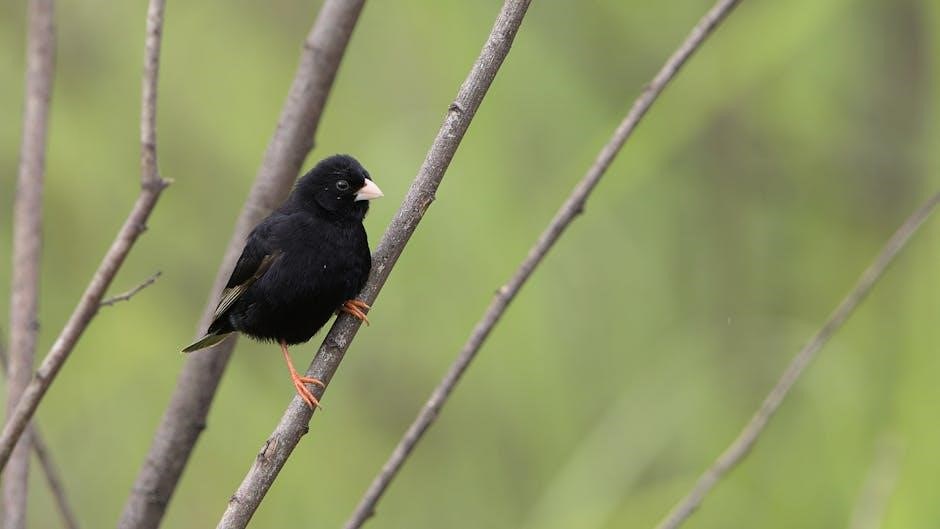
Evolutionary Perspectives on Bird Coloration
Birds’ vibrant colors trace back to evolutionary adaptations, driven by natural selection and sexual selection․ The Aboriginal story of the injured dove and parrot explains their colorful origins, blending myth with biological principles like vision and environmental adaptation․
3․1 Natural Selection and Camouflage
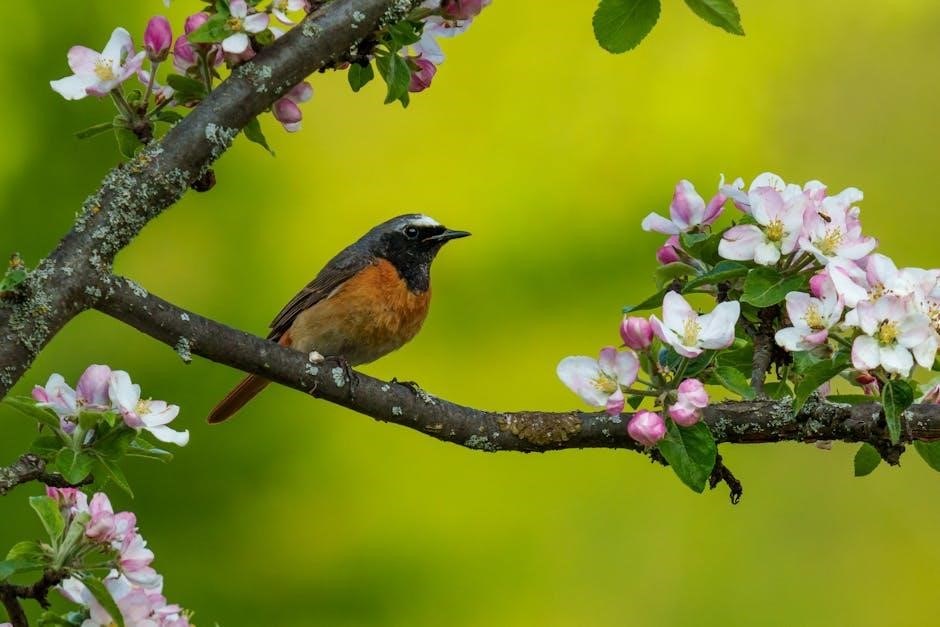
Natural selection has played a crucial role in shaping bird coloration, often for camouflage․ Birds evolved colors to blend into their environments, ensuring survival by avoiding predators․ For instance, forest birds tend to have green hues, while desert species exhibit sandy tones․ This adaptation reduces visibility, enhancing their chances of survival․ Scientific studies highlight how specific color patterns disrupt outlines, making birds less detectable․ Camouflage serves as a prime example of evolutionary ingenuity, where coloration directly impacts fitness and survival in diverse ecosystems․
3․2 Sexual Selection and Mate Attraction
Bird coloration is deeply influenced by sexual selection, where vibrant plumage often serves as a tool for mate attraction․ Brighter, more elaborate colors in males, such as blues, reds, and purples, are favored by females, enhancing mating success․ This evolutionary drive is evident in species with polygynous systems, where males exhibit striking hues to outcompete rivals․ Darwin’s theory of sexual selection supports this, highlighting how such traits evolve through female preference, making coloration a critical factor in avian reproduction and genetic diversity․
3․3 The Role of Color Vision in Birds
Birds possess exceptional color vision, utilizing four cone pigments to perceive a wide spectrum, including ultraviolet light․ This advanced vision plays a crucial role in identifying mates, foraging, and predator avoidance․ Their ability to discern subtle color variations enhances sexual selection, as males with vibrant plumage stand out․ Additionally, color vision aids in detecting ripe fruits and camouflaged prey, making it an essential adaptation for survival․ This unique visual system underscores the evolutionary importance of color in avian behavior and ecological interactions, highlighting its dual role in aesthetics and functionality․
Cultural and Mythological Stories
Birds’ vibrant colors are often explained through mythological tales․ Aboriginal stories, like “How the Birds Got Their Colours,” depict birds gaining hues through acts of kindness and bravery․
4․1 Aboriginal Story: “How the Birds Got Their Colours”
In the Aboriginal story, all birds were once black․ A dove, injured while feeding, was helped by its friends․ The parrot, using its beak, burst the dove’s swollen foot, splashing vibrant colors across the birds’ feathers․ This act of kindness and bravery transformed their dull plumage into a kaleidoscope of hues, creating the diversity seen today․ The story, beautifully illustrated in “How the Birds Got Their Colours,” reflects themes of community, compassion, and the magical origin of natural beauty, resonating deeply in Australian Indigenous culture and beyond․
4․2 The Dove, the Parrot, and the Origins of Color Diversity
The story of the dove and the parrot is a captivating myth explaining the origins of bird color diversity․ Once, all birds were black, but when a parrot helped an injured dove, its vibrant feathers splashed colorful patterns onto the others․ This act of kindness transformed their monotonous appearance into a kaleidoscope of hues, creating the stunning diversity we see today․ The tale, rooted in Aboriginal culture, highlights themes of transformation, community, and the magical beginnings of natural beauty, offering a unique perspective on how birds acquired their dazzling colors․

The Role of Diet and Environment
Birds’ colors are shaped by their diet and surroundings, with certain pigments derived from food sources․ Environmental factors like light exposure and habitat also influence plumage hues, aiding camouflage and communication․
5․1 Dietary Influences on Feather Coloration
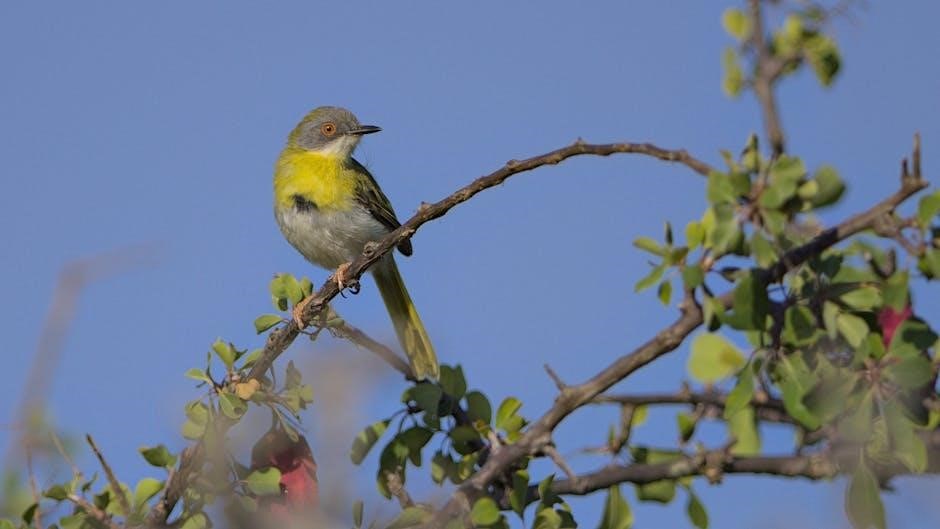
Diet plays a crucial role in determining feather colors, as certain pigments are obtained from food sources․ Carotenoids, found in plants and aquatic organisms, produce red, orange, and yellow hues․ Birds like flamingos owe their pink feathers to carotenoid-rich diets․ Additionally, melanin, a pigment produced internally, contributes to browns and blacks but can be influenced by dietary nutrients․ The availability of specific food items in a bird’s environment directly impacts its plumage coloration, illustrating a strong link between nutrition and visual appearance․
5․2 Environmental Adaptations and Color Changes
Birds’ feather colors often adapt to their surroundings, ensuring survival through camouflage or communication․ Seasonal changes can alter plumage hues, with some species developing brighter colors for mating․ Environmental factors like sunlight exposure and predators’ vision drive these adaptations․ For instance, Arctic birds may turn white in winter to blend in with snow․ Additionally, certain species exhibit physiological color changes, such as darkening feathers to absorb more heat․ These adaptations highlight the dynamic relationship between birds’ coloration and their ecosystems, showcasing nature’s remarkable ability to fine-tune appearances for survival and success․
Scientific Studies and Research
Scientific studies reveal the molecular mechanisms behind bird coloration, including genomic insights into pigment production and feather structure․ Research advances our understanding of evolutionary adaptations and color diversity․
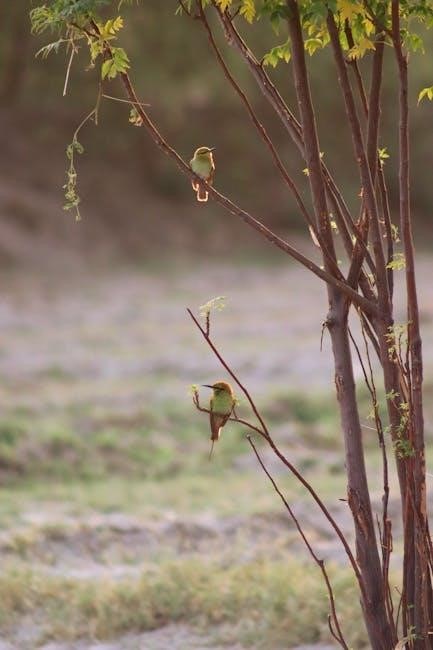
6․1 Genomic Insights into Color Production
Genomic studies have unveiled the molecular basis of bird coloration, identifying specific genes responsible for pigment synthesis․ For instance, the melanocortin 1 receptor (MC1R) gene influences melanin production, affecting feather colors․ Researchers have also discovered how mutations in such genes lead to diverse color patterns․ These findings highlight the evolutionary pressures shaping avian coloration, such as sexual selection and environmental adaptation․ By mapping genetic variations, scientists can trace how different bird species developed unique color traits over time, offering a deeper understanding of their evolutionary history and ecological roles․
6․2 Phylogenetic Analysis of Color Evolution
Phylogenetic studies reveal how bird coloration has evolved across species, linking color traits to evolutionary lineages․ Research shows that color patterns reflect ancestral relationships, with certain hues emerging in specific branches of the avian family tree․ For instance, sexual dichromatism often arises in lineages where sexual selection is intense․ Scientists map these evolutionary pathways using genetic data, uncovering how traits like bright plumage or cryptic colors developed over time․ Such analyses provide insights into how environmental pressures and visual systems shaped color diversity, offering a broader understanding of avian evolution and adaptation․
Conservation Implications
Understanding bird coloration is crucial for conservation, as habitat loss and climate change threaten color diversity, impacting survival and mating success in avian populations․
7․1 The Importance of Studying Bird Coloration
Studying bird coloration reveals insights into evolutionary processes, sexual selection, and survival strategies․ Pigmentation and structural colors influence mate attraction, camouflage, and communication․ Understanding these mechanisms aids conservation efforts by identifying threats to color diversity, such as habitat loss and pollution․ Additionally, bird coloration reflects broader ecological dynamics, offering clues about environmental health and species adaptation․ This knowledge is vital for developing strategies to protect avian biodiversity and the intricate roles colors play in their lives and ecosystems; It also highlights the interconnectedness of coloration with evolutionary and cultural narratives․
7․2 Threats to Color Diversity in Bird Populations
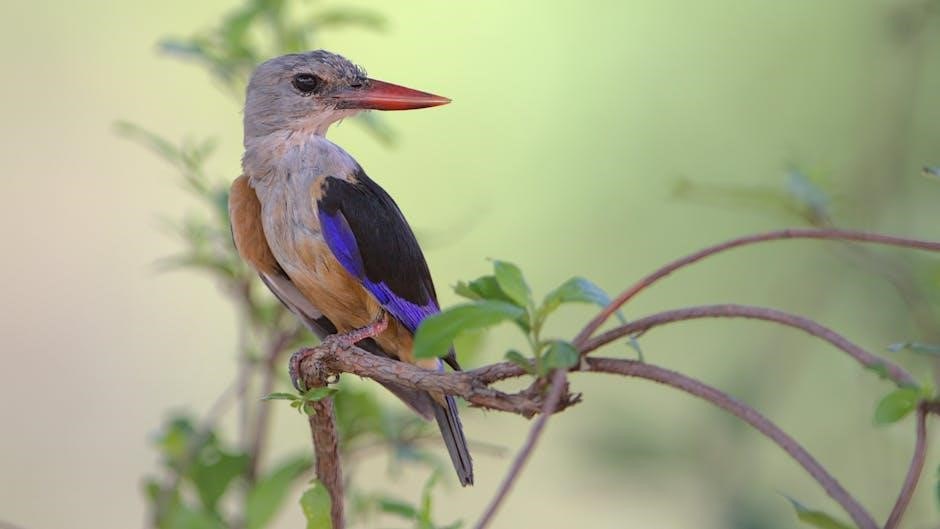
Bird color diversity faces numerous threats, including habitat destruction, pollution, and climate change․ Deforestation reduces resources and shelter, altering evolutionary pressures․ Pollution disrupts pigment production and feather structure, dulling colors․ Climate change affects food availability, impacting carotenoid-based hues․ Introduced species and hybridization can dilute unique color traits․ These threats not only diminish visual diversity but also impair survival and mating success, highlighting the urgent need for conservation efforts to protect avian coloration and its ecological significance․
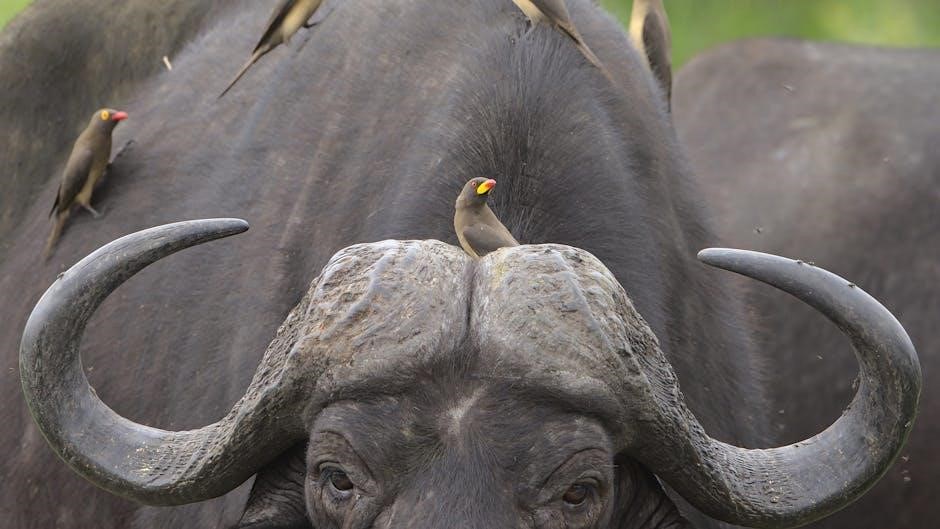
Bird coloration captivates through its evolutionary and cultural significance, reflecting adaptation and beauty․ Conservation efforts are vital to preserve this natural artistry for future generations․
8․1 The Significance of Bird Colors in Nature and Culture
Bird colors hold profound significance in both nature and culture, reflecting adaptation, communication, and beauty․ In nature, they aid in camouflage, mating, and territorial displays․ Culturally, they inspire art, myths, and symbolism, as seen in stories like “How the Birds Got Their Colours,” where vibrant hues emerged from communal aid․ These colors also represent resilience and diversity, embodying the interconnectedness of life․ Their beauty captivates humans, fostering appreciation for nature’s artistry and reinforcing the importance of conservation to preserve such natural wonders for future generations․
8․2 Future Directions in Research and Conservation
Future research on bird coloration should focus on advancing genomic studies to uncover the molecular basis of color production and its evolutionary pathways․ Phylogenetic analyses can reveal how color traits diverged across species, aiding conservation efforts․ Protecting habitats and addressing climate change are critical to preserving color diversity․ Collaborative efforts between scientists and conservationists can ensure the survival of these natural wonders․ By integrating cutting-edge technology with ecological insights, we can better safeguard avian coloration for future generations, ensuring their beauty and functional significance endure․
